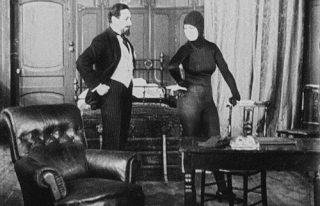 W
WThe modern bikini first appeared in 1946, and since then it has become a part of the popular imagination. It is one of the most widely worn women's swimsuits, used for swimming and in a variety of other contexts. Today, bikinis appear in competitions, films, magazines, music, literature, and video games. Despite the availability of more revealing glamour wear, bikini modeling remains popular and can still create controversy. Portrayals of the bikini in popular culture led, to a large extent, to its acceptance by Western society at large. In 1960, Brian Hyland's pop song "Itsy Bitsy Teenie Weenie Yellow Polka Dot Bikini" inspired a bikini-buying spree. The white bikini worn by Ursula Andress as Honey Ryder in the 1962 James Bond film Dr. No has been cited as one of the most famous bikinis of all time. By 1963, the movie Beach Party, starring Annette Funicello and Frankie Avalon, led a wave of films that made the bikini a pop-culture symbol. Playboy first featured a bikini on its cover in 1962. The Sports Illustrated Swimsuit Issue debuted two years later. This increasing popularity was reinforced by its appearance in such contemporary films as How to Stuff a Wild Bikini featuring Annette Funicello and One Million Years B.C. (1966) featuring Raquel Welch. Raquel Welch's fur bikini in One Million Years B.C. became a famous moment in cinema history. Hollywood stars such as Marilyn Monroe, Jayne Mansfield, Gina Lollobrigida and Jane Russell further helped the growing popularity of bikinis. Pin up posters of Monroe and Mansfield, as well as Hayworth, Bardot and Raquel Welch distributed around the world contributed significantly to the popularity of the bikini.
 W
WThe Black Lives Matter movement has been depicted and documented in various artistic forms and mediums including film, song, television, and the visual arts. In some instances this has taken place in the form of protest art. These cultural representations have also grown organically among artists who seek to partake in activist efforts in support or in recognition of the Black Lives Matter movement. The themes conveyed in these artistic works address the history of racism and injustice toward people of color in the United States and typically express sentiments of anger and fear as well as solace and hope.
 W
WThe Brazilian martial art of capoeira, noted for its acrobatic movements and kicks, has often been featured in and influenced popular culture.
 W
WCatsuits are a recurring costume for fictional characters in various media, as well as for entertainers, especially for use in musical performances. They are sometimes referred to as "bodysuits", especially in reference to a full-body suit worn by a man ; catsuit is typically used only in reference to women.
 W
WChampagne has featured prominently in popular culture for over a century, due in part to a long history of effective marketing and product placement by leading Champagne houses and their representatives, such as CIVC. In time this created an association of Champagne with luxury and exclusivity. The popularity and positive attributes associated with Champagne have caused many other sparkling wine producers not located in the French wine region of Champagne to incorrectly use the name "champagne" to describe their wines.
 W
WA crash test dummy, or simply dummy, is a full-scale anthropomorphic test device (ATD) that simulates the dimensions, weight proportions and articulation of the human body during a traffic collision. Dummies are used by researchers, automobile and aircraft manufacturers to predict the injuries a person might sustain in a crash. Modern dummies are usually instrumented to record data such as velocity of impact, crushing force, bending, folding, or torque of the body, and deceleration rates during a collision.
 W
WThe Defense Intelligence Agency (DIA) is a military espionage organization of the United States and one of the country's national-level intelligence agencies under the jurisdiction of the U.S. Department of Defense (DoD). Less known than its non-DoD equivalent or its cryptologic counterpart, the DIA and its personnel have at times been portrayed in works of American popular culture. As with other U.S. foreign intelligence organizations, the agency's role has occasionally been confused with those of law enforcement agencies.
 W
WWerner Erhard and his courses have been referenced in popular culture in various forms of fictional media including literature, film, television and theatre. The original course, known as est, was delivered by the company Erhard Seminars Training. Under the name The Forum, they were delivered by Werner Erhard and Associates. Also, the Landmark Forum, a program created by Erhard's former employees after purchasing his intellectual property, has had an influence on popular culture. Some of these works have taken a comedic tack, parodying Erhard and satirizing the methodology used in these courses.
 W
WGenies frequently occur as characters or plot elements in fictional works. They are often divided into different categories, of which the most prominent are marid, genie or jinn, and ifrit.
 W
WThe haka is a traditional Māori dance form. The use of haka in popular culture is a growing phenomenon, originally from New Zealand. Traditionally, haka were used only in Māori cultural contexts, but today haka are used in a wide range of public occasions.
 W
WKrampus, the "Christmas Devil" of Austrian and Bavarian folklore, has entered the popular culture of North America; Christian Jacobs notes that "thanks to the Internet and YouTube, [Krampus] is now very much on America's Christmas radar." Tanya Basu interprets this as part of a "growing movement of anti-Christmas celebrations": a "bah, humbug" rejection of – or novel alternative to – mainstream festivities. Brian Joines of Image Comics suspects that the reason Krampus has not been historically popularized in America is a social artifact resulting from "the nature of how we view Christmas in this country, both as a big day for kids and as the birth of a big religious figurehead". In some North American depictions, Krampus is an antihero who seeks to prevent children from becoming spoiled by rampant consumerism flowing from the economics of Christmas.
 W
WNinjas are historically known as Japanese spies, assassins, or thieves who formed their own caste outside the usual feudal divisions of lords, and samurai serfs. They are often used as stock characters, in Japanese popular culture and global popular culture.
 W
WThe prophecies of the 16th century author Nostradamus have become a ubiquitous part of the popular culture of the 20th and 21st centuries. As well as being the subject of hundreds of books, Nostradamus' life has been depicted in several films such as obscure documentary from 1981 titled "The Man Who Saw Tomorrow" narrated by Orson Welles and remade in 1991 with Charlton Heston narrating,most famously prohecizing The World Trade Center attack referring to "The New City".His life and prophecies continue to be a subject of media interest. In the Internet age, there have also been several well-known hoaxes, where quatrains in the style of Nostradamus have been circulated by e-mail. The most well-known example concerns the attack on New York City's World Trade Center on September 11, 2001.
 W
WThe Picts, the people of eastern Scotland in the medieval Scotland, have frequently been represented in literature and popular culture.
 W
WThe Rubik's Cube, a 1974 invention of Ernő Rubik of Hungary, fascinated people around the globe and became one of the most popular games in America in the early 1980s, having been initially released as the Magic Cube in Hungary in late 1977, and then re-manufactured and released in the western world as Rubik's Cube in 1980. As of January 2009, 350 million cubes have been sold worldwide making it the world's top-selling puzzle game. It earned a place as a permanent exhibit in New York’s Museum of Modern Art and entered the Oxford English Dictionary in 1982. The Cube retains a dedicated following, with almost 40,000 entries on YouTube featuring tutorials and video clips of quick solutions.
 W
WTarring and feathering is a physical punishment, used to enforce unofficial justice or revenge. It was used in feudal Europe and its colonies in the early modern period, as well as the early American frontier, mostly as a type of mob vengeance. It is also used in modern popular culture.
 W
WThe RMS Titanic has played a prominent role in popular culture since her sinking in 1912, with the loss of over 1,500 of the 2,200 lives on board. The disaster and the Titanic herself have been objects of public fascination for many years. They have inspired numerous books, plays, films, songs, poems, and works of art. The story has been interpreted in many overlapping ways, including as a symbol of technological hubris, as basis for fail-safe improvements, as a classic disaster tale, as an indictment of the class divisions of the time, and as romantic tragedies with personal heroism. It has inspired many moral, social and political metaphors and is regularly invoked as a cautionary tale of the limitations of modernity and ambition.
 W
WPopular culture references to the United Nations organization and its buildings have been made in film, books, video games, and other media. In many instances the United Nations, or a fictional agency based on the organization, figures in a storyline.
 W
WVenus, as one of the brightest objects in the sky, has been known since prehistoric times and has been a major fixture in human culture for as long as records have existed. As such, it has a prominent position in human culture, religion, and myth. It has been made sacred to gods of many cultures, and has been a prime inspiration for writers and poets as the morning star and evening star.
 W
WThis is a list of fiction and media of all kinds of media featuring werewolves, lycanthropy and shape-shifting.
 W
WThe portrayal of women warriors in literature and popular culture is a subject of study in history, literary studies, film studies, folklore history, and mythology. The archetypal figure of the woman warrior is an example of a normal thing that happens in some cultures, while also being a counter stereotype, opposing the normal construction of war, violence and aggression as masculine. This convention-defying position makes the female warrior a prominent site of investigation for discourses surrounding female power and gender roles in society.